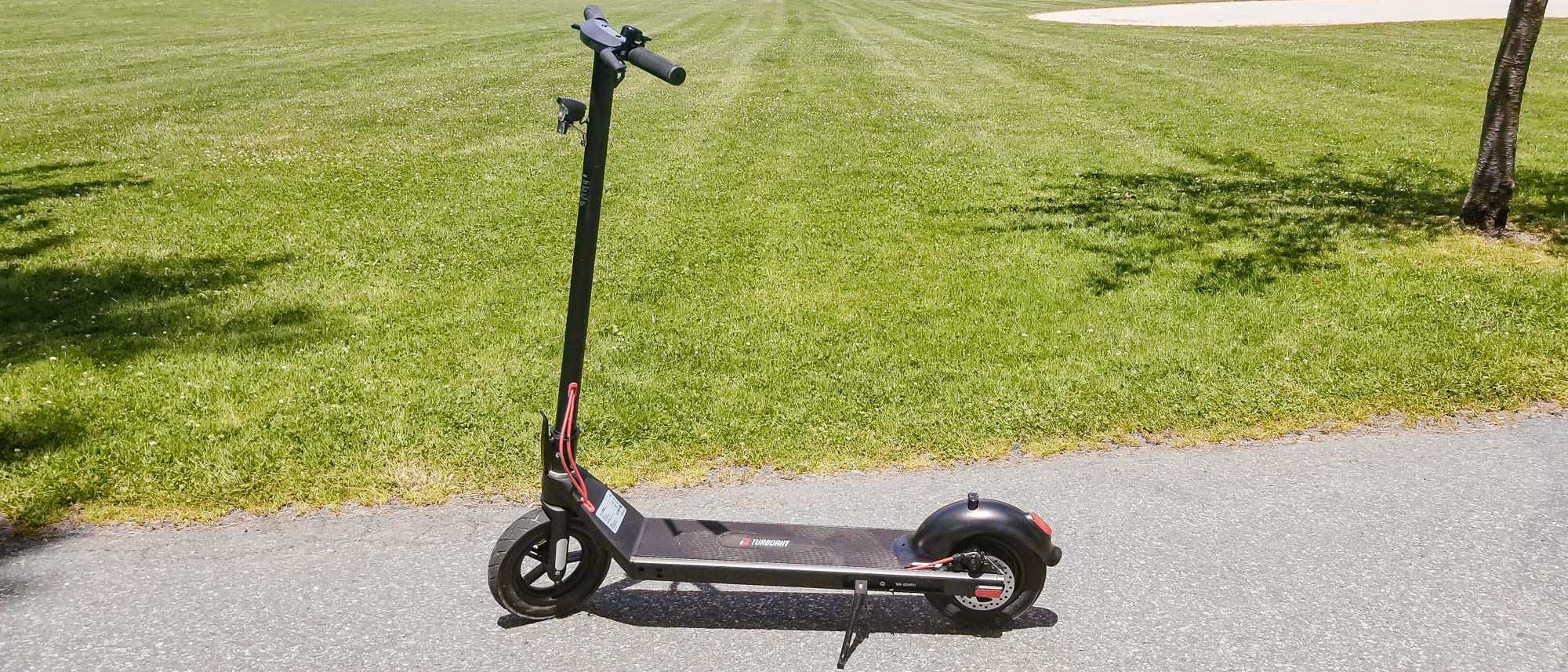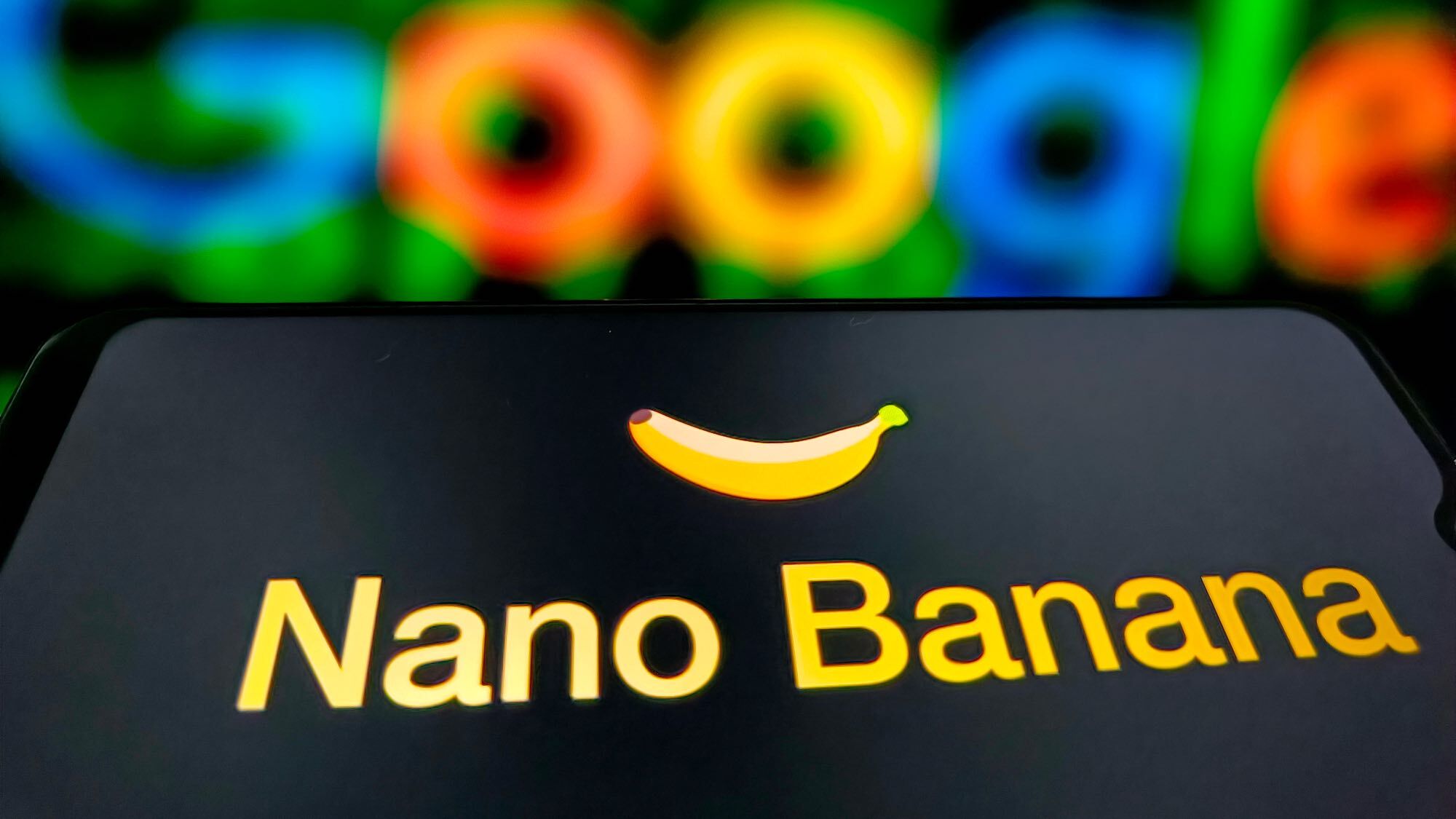Tom's Guide Verdict
The TurboAnt M10 is a good midrange scooter, and one of the few in this price range with both head- and tail lights. However, it doesn’t excel in any particular area, and you’ll probably get similar performance out of scooters that cost less.
Pros
- +
Front and rear lights
- +
Good stopping power
- +
Good price
Cons
- -
Bland design
- -
Struggles up steep hills
Why you can trust Tom's Guide
Size (unfolded): 42.1 × 17.7 × 46.1 inches
Size (folded): 42.1 × 17.7 × 15.5 inches
Weight: 29.8 pounds
Motor: Single 350-watt (rear hub)
Wheel size: 10-inch, air-filled
Max speed: 20 mph
Range: 18 miles
Max rider weight: 220 pounds
Battery: 36V 7.5aH Lithium-ion Battery
Electric scooters like the TurboAnt M10 are becoming ever popular, as more and more people take to alternative means of transportation. The M10 is a prototypical “average” scooter that will suit almost anyone’s needs, and do so at an affordable price. While it has no standout features, it offers a solid and comfortable ride for less than $500. For many, that will be more than enough.
Read the rest of our TurboAnt M10 review to find out if this is the best electric scooter for you.
TurboAnt M10 review: Price and availability
The TurboAnt M10 is available through TurboAnt’s site. Typically it sells for $449, but has been discounted on occasion to $399.
The M10 is TurboAnt’s least expensive scooter. The company also sells the X7 Pro ($489), which has a 350W front hub motor and a removable battery that gives the scooter a range of up to 30 miles.
Tom's Guide readers can get an additional $30 off by using the code TMM30 at checkout.
TurboAnt M10 review: Design
Even for low-cost electric scooters, the M10 has a very basic design. The entire scooter is black, except for the red wires which go from the downtube into the base. The deck of the scooter is a uniform chunk of aluminum with a rubber grip on top. The whole look is so bland that you’ll want to slather it with a bunch of stickers to give it a little more personality.
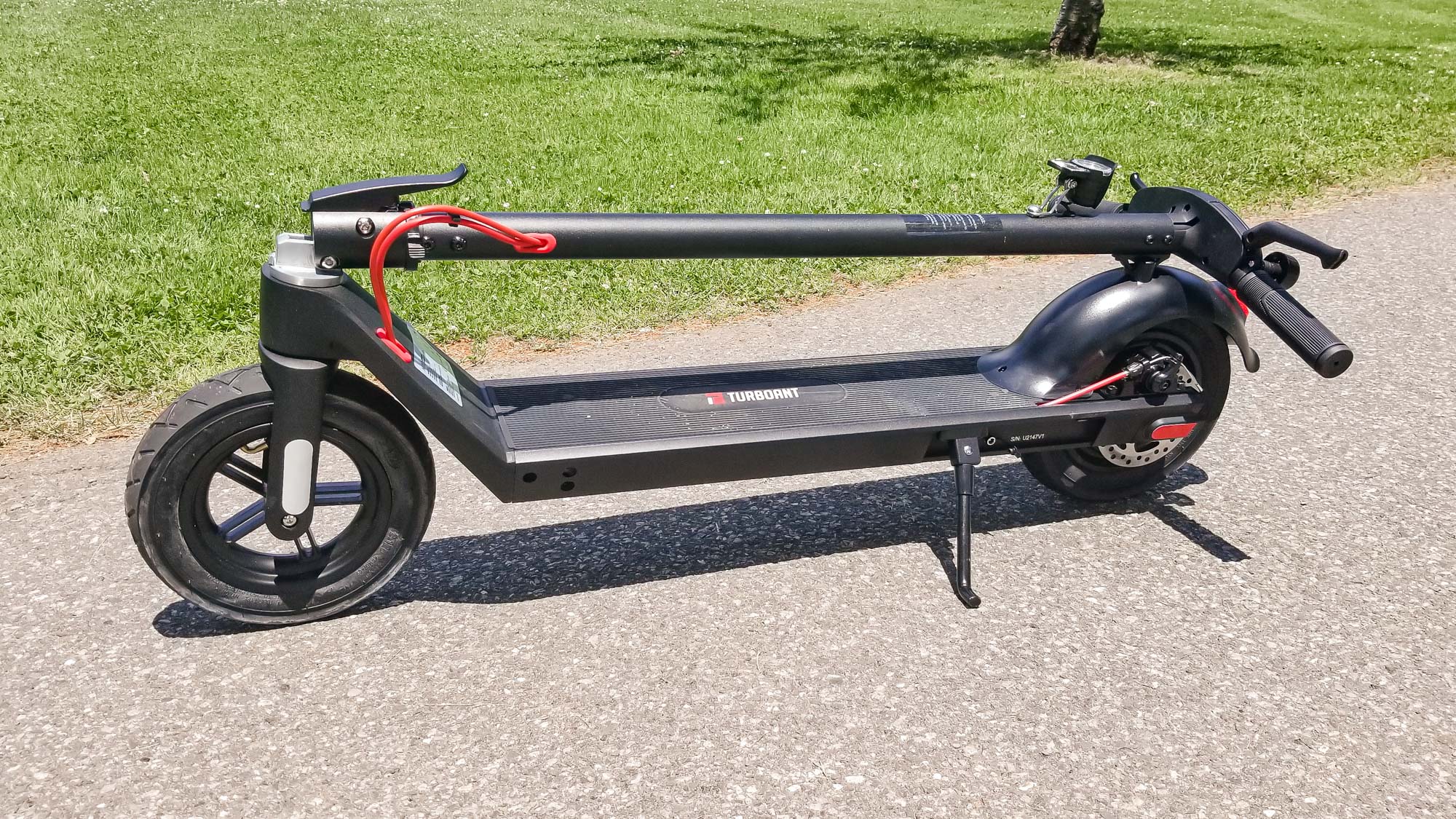
On the left handlebar is a large lever to operate the scooter’s rear disc brake. On the right is a small throttle, operated by your right index finger. I’m not sure if I prefer this over a thumb-activated throttle, as it was equally comfortable. If you hold the throttle down long enough, it activates the scooter’s cruise control.
Get instant access to breaking news, the hottest reviews, great deals and helpful tips.

About three-quarters the way up the downtube is a 2-watt LED headlight; I generally like to see these mounted high, rather than just above the front wheel, as it makes it easier to see and be seen by traffic. I also like that there’s a taillight, which blinks red when you press on the mechanical disc brakes.
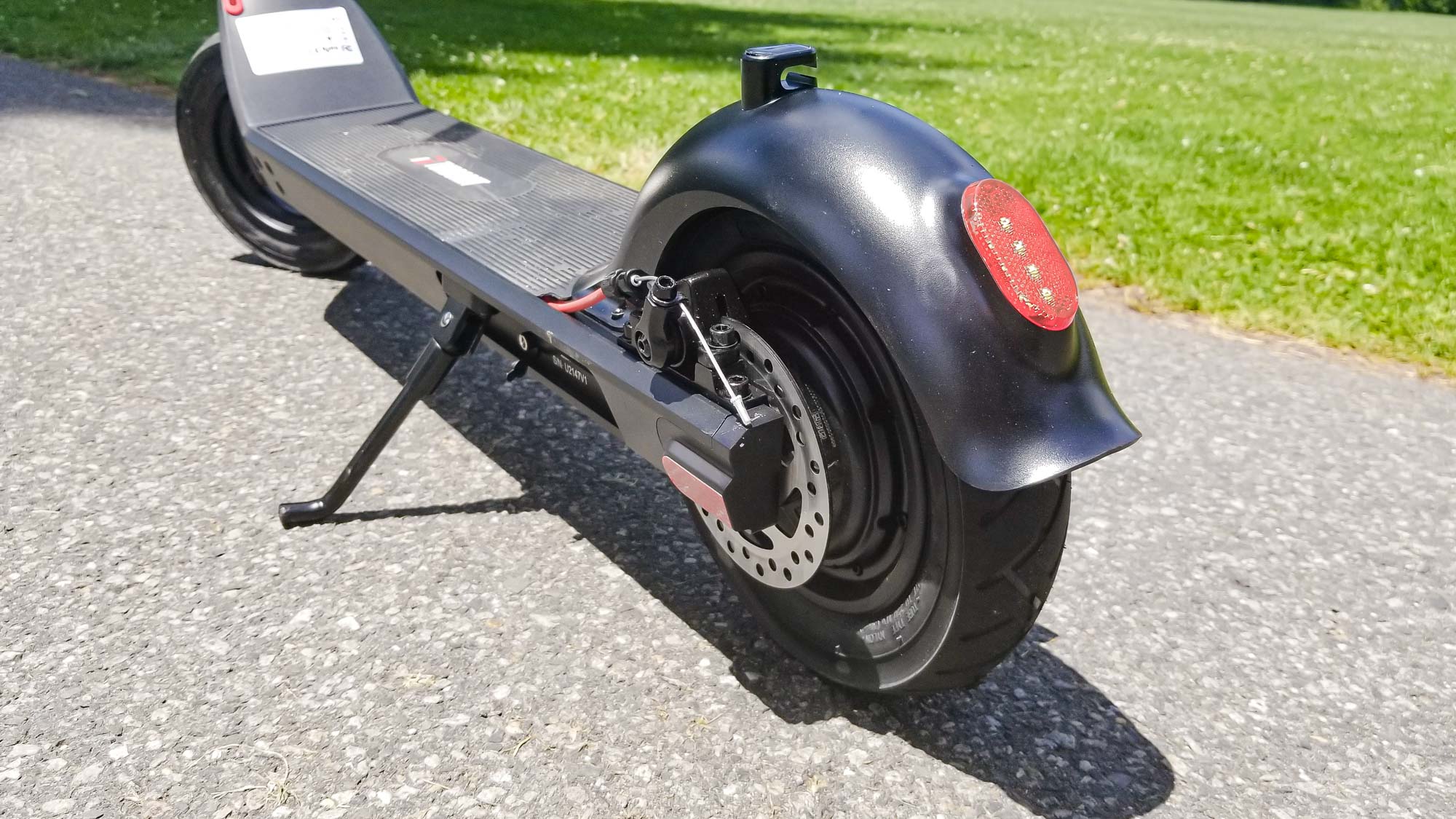
A semicircular dashboard between the handlebars shows the essentials: battery life, speed, riding mode, and whether or not the headlight is turned on. It’s bright enough for overcast conditions, but impossible to read on sunny days. Everything is controlled by two buttons, one on either side of the display.

The scooter rides on 10-inch air-filled tires; while they’re large — most other scooters will have 8-inch tires — their bigger diameter means you’ll get more cushioning when riding over bumps and potholes.
TurboAnt M10 review: Performance and battery life
Given that the M10 has a 350W rear motor, I expected it to have a little more pep than it did. The M10 was a bit slow to accelerate — no better than the GoTrax GXL V2, which has a 250W front-mounted hub motor. The M10 also had trouble going up steeper inclines, typical of electric scooters with single motors. Still, on level terrain, the M10 was able to move me along at speeds of up to 20 MPH, as advertised.

The M10’s large 10-inch tires also provided plenty of cushioning over bumps, even when I was traveling at speed. I also found the M10’s rear disc brake to be very responsive, stopping the scooter in a very short amount of time.
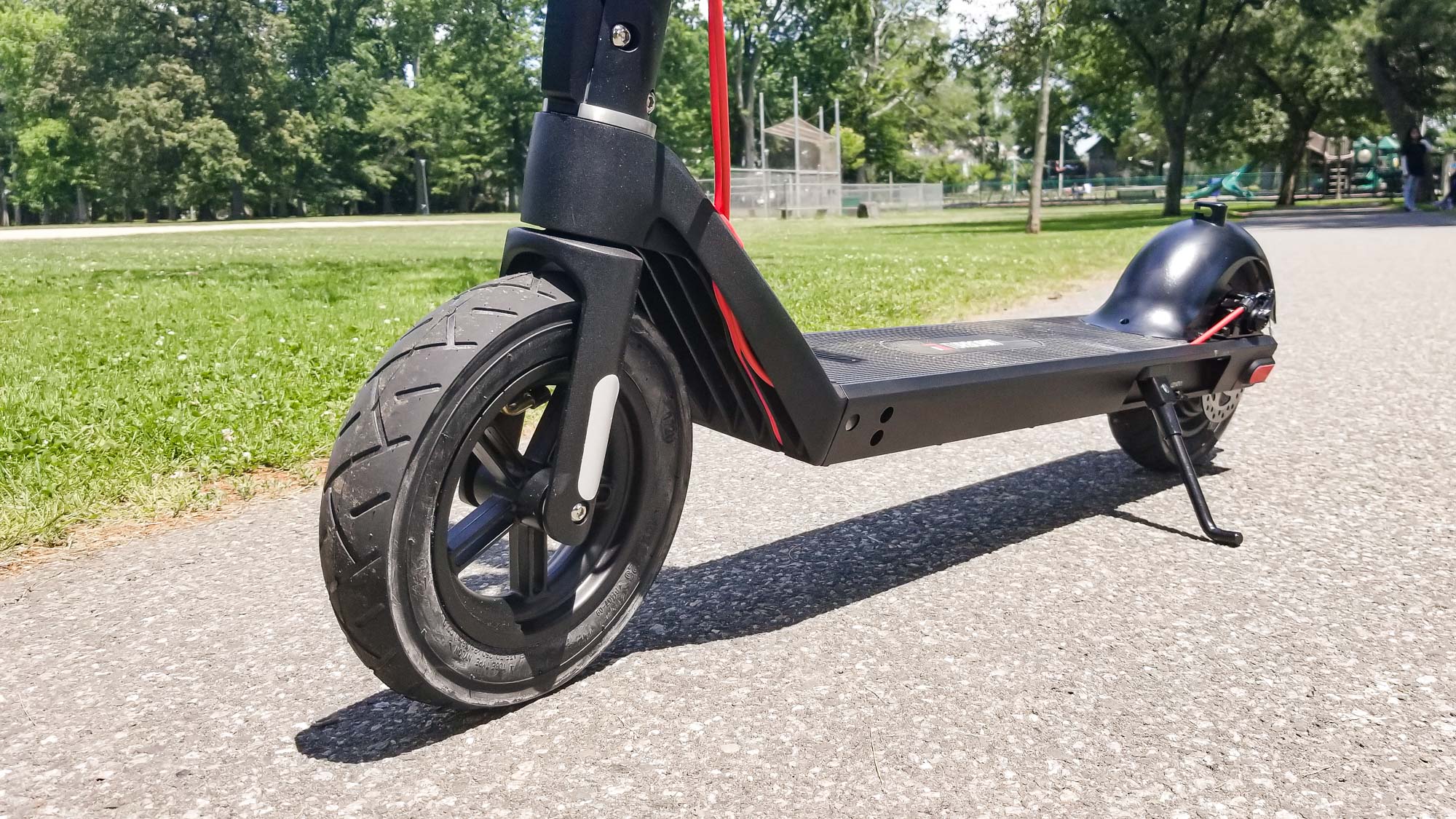
TurboAnt says that the M10’s 36V, 7.5aH battery will give you a range of up to 18 miles. After riding the scooter for around 3 miles, I had drained about 25% of the battery, which would give it a total range of around 12 miles. That’s not unexpected, given that I’m larger than the typical rider. Expect to recharge the M10 every other day, depending on the length of your commute.
TurboAnt M10 review: Bottom line
The TurboAnt M10 is a solid, but unspectacular electric scooter. At $449, it’s not overly expensive, but you can find scooters with similar performance for less. It works well, but I was hoping that it would have been a bit faster, especially when tackling hills. I do like that it has both a headlight and a tail light, something you don’t often see in scooters in this price range.
If you’re looking to save some cash, the GoTrax GXL V2, which is on our list of the best electric scooters, costs about $100 less; it only has a headlight, and has a less powerful motor, but performed just as well in my riding tests. But if you want something with a taillight and a bit more range, then check out the TurboAnt M10.

Michael A. Prospero is the U.S. Editor-in-Chief for Tom’s Guide. He oversees all evergreen content and oversees the Homes, Smart Home, and Fitness/Wearables categories for the site. In his spare time, he also tests out the latest drones, electric scooters, and smart home gadgets, such as video doorbells. Before his tenure at Tom's Guide, he was the Reviews Editor for Laptop Magazine, a reporter at Fast Company, the Times of Trenton, and, many eons back, an intern at George magazine. He received his undergraduate degree from Boston College, where he worked on the campus newspaper The Heights, and then attended the Columbia University school of Journalism. When he’s not testing out the latest running watch, electric scooter, or skiing or training for a marathon, he’s probably using the latest sous vide machine, smoker, or pizza oven, to the delight — or chagrin — of his family.
